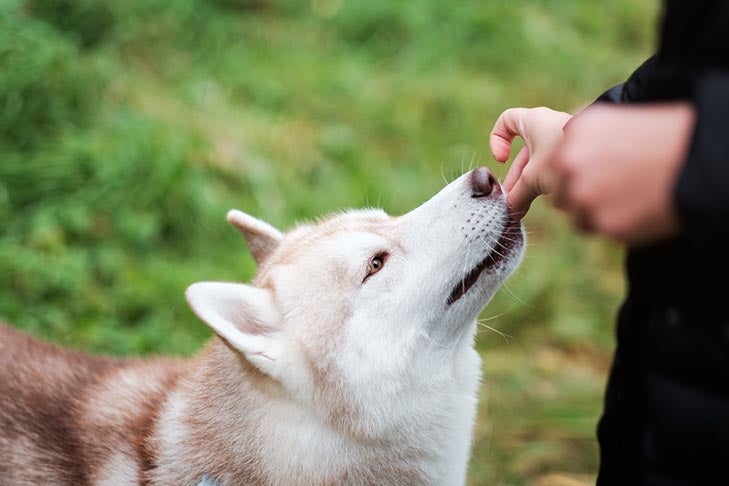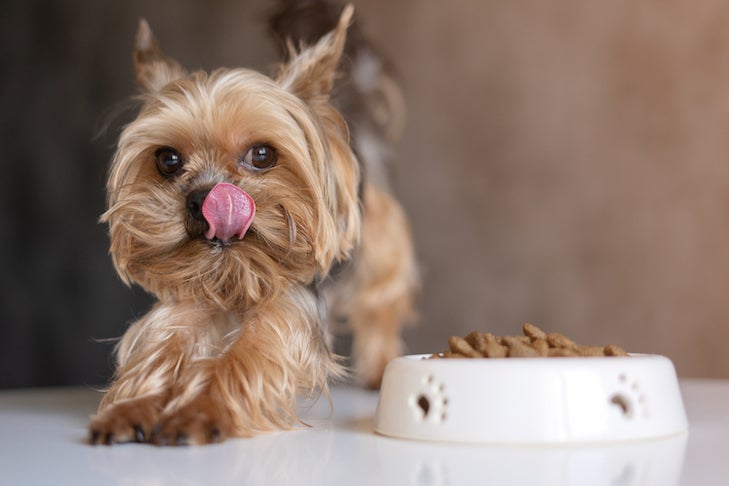Paid Advertisement
If you love the convenience of dry food, there are other options besides feeding your dog plain old kibble. These kibble alternatives employ methods such as freeze-drying, dehydration, or gentle cooking to provide your dog with fresh whole ingredients without the need for refrigeration.
Below you’ll find more information on fresh food alternatives to kibble, their pros and cons, and how each drying method works to create recipes that are nutritionally balanced and complete.
What Do Fresh, Non-Kibble Dry Foods Have in Common?
Freeze drying, air drying, and dehydration involve the use of different drying methods to preserve the dog food. The main difference between them is whether you use pressure or heat or a combination of the two to remove moisture from the food.
Removing moisture helps eliminate pathogens that can cause illness. But it also means that your dog will need to drink more water compared to when you’re feeding them a wet food diet. Make sure to have fresh water on hand to keep your dog properly hydrated.
These dry foods offer a convenient alternative to any current wet, dry, or homemade dog food. Companies like A Pup Above formulate recipes with the goal of feeding your dog fresh whole ingredients that have undergone minimal cooking and processing.

Normally, the use of high temperatures during the manufacturing process can lead to the loss of proteins, enzymes, vitamins, and minerals. A Pup Above uses 100 percent human-grade ingredients and the sous-vide cooking method to cook the food slowly and evenly, thus retaining its nutrients.
Aside from convenience, there are other advantages to feeding freeze-dried, air-dried, or dehydrated food. What’s important is that you read the food labels carefully and consider the pros and cons of these non-kibble alternatives, including the following:
Pros
- Lightweight and longer lasting
- No need to freeze and defrost the food before serving
- Prevention of mold and bacteria due to the removal of moisture
- Have a similar nutrient profile as the original raw ingredients
- Free of artificial preservatives
- Can feed smaller portions since the food is nutrient-dense
- Convenient for traveling or camping with your dog
Cons
- Can be expensive
- Freeze-dried food crumbles easily
- Rehydration may be necessary
On the last point, some companies recommend rehydrating the food while others suggest this step isn’t necessary. If recommended or desired, adding bone broth or distilled water to the food is a good option since moisture aids in digestion.
Deciding whether to rehydrate the food may come down to whether your dog prefers crunchy or soft food. Keep in mind that, even with reduced moisture, these non-kibble alternatives still have a higher moisture content than kibble.
How Do Different Food Drying Methods Work?
Freeze-Dried Dog Food
Through a three-step process, freeze-drying removes moisture from the food while the food stays frozen. The first step is freezing the raw ingredients to make sure any water in the food remains in a solid state. Freezing the food minimizes alterations to nutrients in the food.
The second step involves using a combination of pressure and cold temperatures to transform the frozen liquids into a gaseous state (i.e., water vapor), known as sublimation, which is the process of turning solids directly into a gas without going through the liquid phase.
The third and final step is drying the food a second time by raising the temperature. The result is a product that’s as close to the original food as possible, but it tends to be more expensive than traditional raw food diets due to the cost of freeze-drying the food.

Air-Dried Dog Food
Air drying works by slowly and gently evaporating the moisture from the food. This drying method reduces damage to essential nutrients and enzymes that are affected by using heat or other cooking methods.
Air-dried food provides similar benefits as a raw food diet and is more resistant to crumbling than freeze-dried food. Since the drying process results in nutrient-dense food, you can feed your dog smaller portions than when you’re feeding kibble. Smaller portion sizes can help offset the cost of air-dried food.
Dehydrated Food
Dehydration removes moisture by applying very low heat for an extended period of time to preserve the food. The heat draws liquid from the food which then evaporates. Dehydration produces food that’s no longer raw, but the temperatures used during the drying process are too low to consider the food cooked.
With dehydration, there’s some nutrient loss because you’re applying heat to the raw, natural ingredients. Nevertheless, the food retains many of the enzymes, vitamins, and amino acids of the original, unprocessed food.
NutriDry Food
By combing the methods of air drying and dehydration, A Pup Above has developed a unique cooking process called Nutridry. The Nutridry cooking process works by gently drying out whole foods to create Cubies, which preserve the nutrients and flavor of fresh food.
Cubies contain non-GMO veggies and ingredients that promote joint, immune, and digestive health such as flaxseed, cranberry, salmon oil, and sweet potato. A Pup Above formulates each recipe to meet AAFCO guidelines and provides a feeding guide so you know how much to feed your dog.
Cubies are half the cost of air-dried food and 30 percent less than the cost of freeze-dried food. The food arrives in a convenient and ready-to-serve package and doesn’t need to be rehydrated. When mealtime comes around, you can be confident in feeding your dog, food that’s been developed by veterinarians and tested for nutrition and palatability.
A Pup Above was founded by pet parents Ruth and Javier Marriott and their pup, Lola Marie Marriott. Ruth and Javier were tired of not knowing what was in Lola’s bowl and Lola was tired of not liking anything they put in her bowl! Together, they created A Pup Above, a food that’s delicious, nutritious, and fully transparent, from farm to bowl. Headquartered in Austin, Texas, A Pup Above specializes in its unique sous-vide cooking method, which gives the food more flavor, more nutrients, more healthy protein, and higher moisture. A Pup Above can be found nationwide at independent pet retailers.


